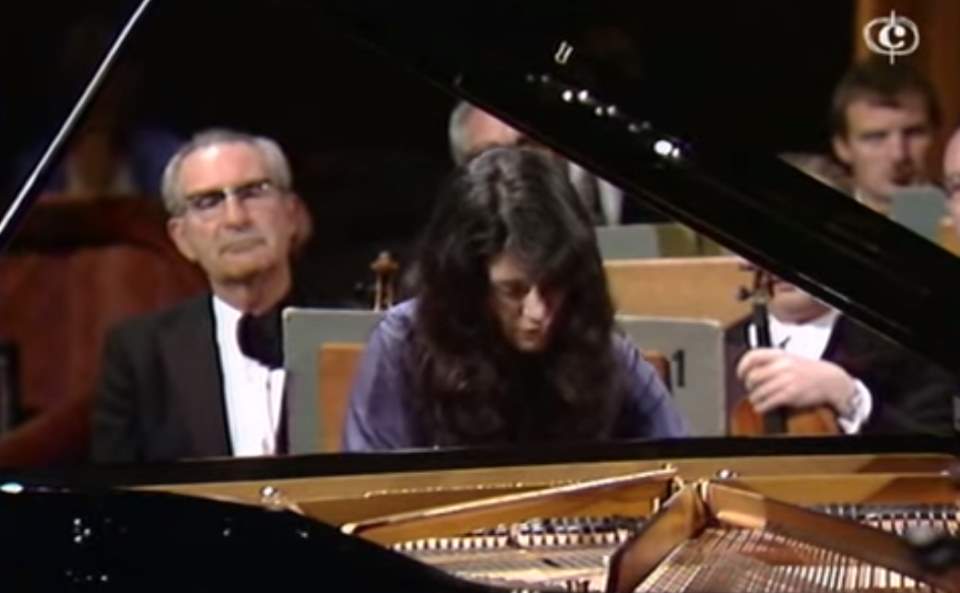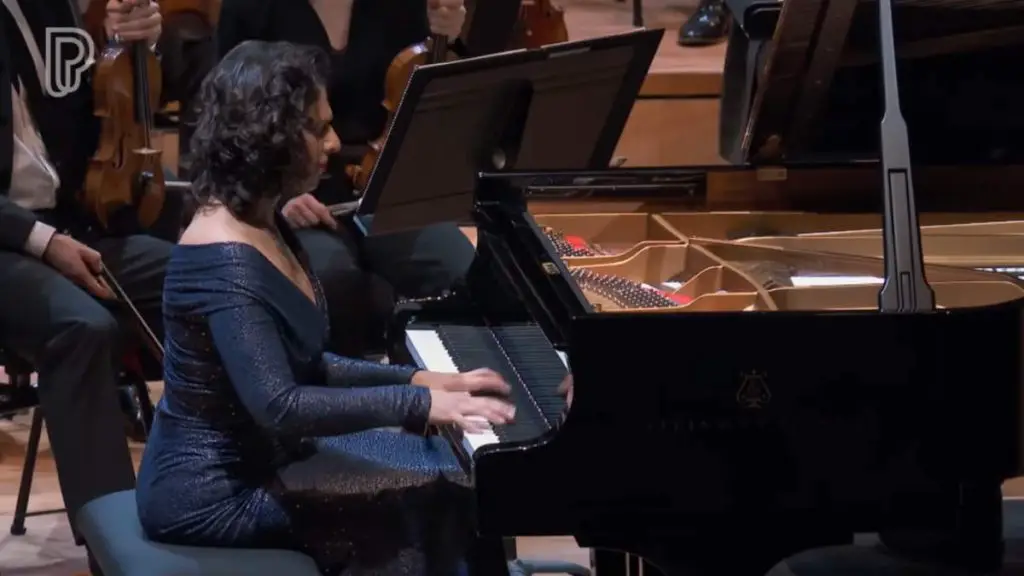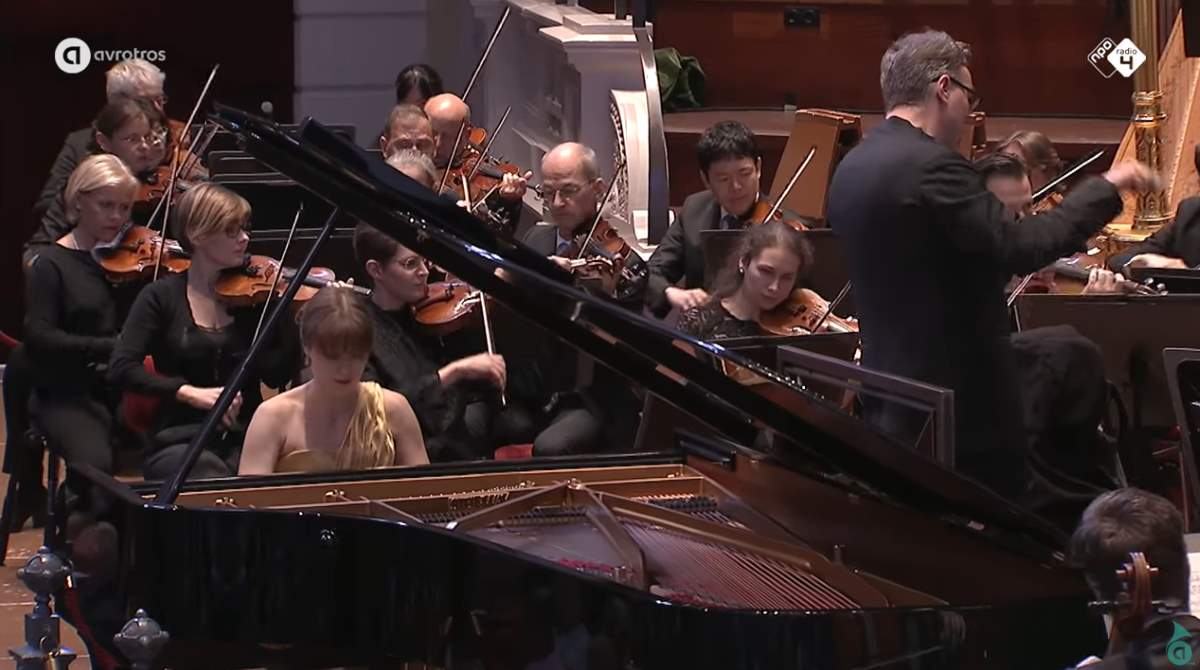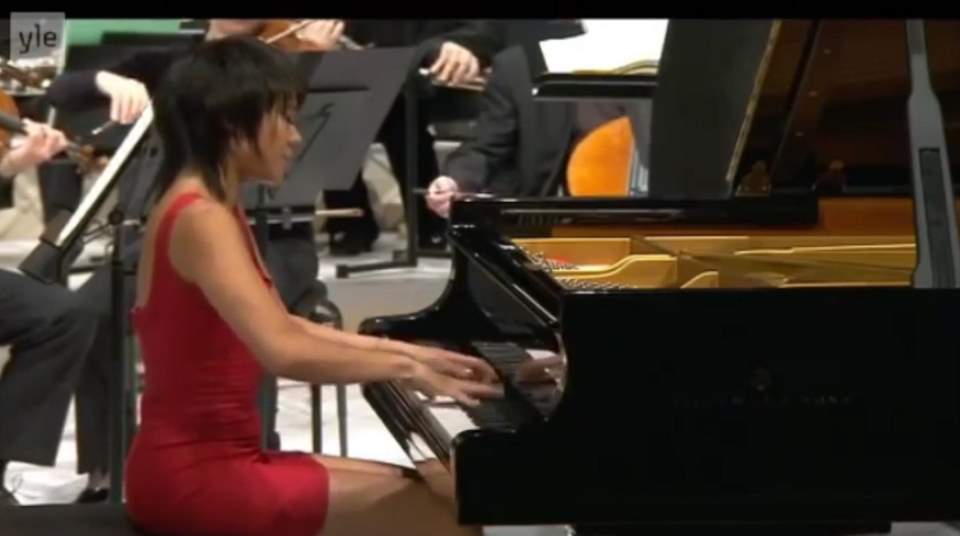Accompanied by the Orchestre Philharmonique de Radio France, the South Korean pianist Seong-Jin Cho performs Pyotr Ilyich Tchaikovsky’s Piano Concerto No. 1 in B-flat minor, Op. 23. Conductor: Myung-Whun Chung. Recorded in 2012.
Pyotr Ilyich Tchaikovsky’s Piano Concerto No. 1
Tchaikovsky’s Piano Concerto No. 1 in B-flat minor, Op. 23, is a significant work in the classical music repertoire, renowned for its emotional depth and technical challenges. Composed between November 1874 and February 1875, the concerto initially faced harsh criticism from Nikolay Rubinstein, a prominent Russian pianist and director of the Moscow Conservatory. Rubinstein condemned the work as poorly constructed and refused to perform it unless substantial changes were made. Tchaikovsky, however, was resolute in his artistic vision and declined to revise the piece.
Despite Rubinstein’s initial disapproval, Tchaikovsky found a willing performer in the German virtuoso Hans von Bülow, who admired the concerto’s originality and nobility. The concerto premiered in Boston on October 25, 1875, conducted by Benjamin Johnson Lang with Bülow as the soloist. Although the reception from critics was mixed, the audience’s response was overwhelmingly positive. This success led to the piece gaining popularity in Europe as well. Eventually, Rubinstein retracted his criticism and even incorporated the concerto into his repertoire, conducting the Moscow premiere and performing it across Europe.
Tchaikovsky’s concerto stands out for its bold opening with striking chords that immediately capture the listener’s attention. The piece is characterized by its dramatic and expressive qualities, blending Tchaikovsky’s distinctive melodic style with intricate piano passages. Despite Tchaikovsky’s own limited piano skills, he crafted a concerto that challenges and showcases the virtuosity of the soloist, while also achieving a harmonious interplay with the orchestra. The concerto has since become a staple in the classical concert repertoire, admired for its emotional intensity and technical brilliance.
Movements
1. Allegro non troppo e molto maestoso – Allegro con spirito
The first movement of Tchaikovsky’s Piano Concerto No. 1 in B-flat minor, Op. 23, is a powerful and evocative piece, celebrated for its dramatic opening and intricate musical structure. The movement, titled “Andante non troppo e molto maestoso – Allegro con spirito,” is crafted in the Sonata form and set in B-flat minor.
The movement begins with a notable introduction featuring the horns playing three declaratory notes. This is followed by the second introduction theme in D-flat major, played by the strings and accompanied by chordal piano accompaniments. The piano then takes a more prominent role, playing a decorated version of this theme, accompanied by pizzicato strings. This leads to a transition phase where the introduction theme is revisited with ascending sequences based on the diminished chord, culminating in a cadenza and the return of the introduction theme in E-flat minor.
The exposition section starts with a theme based on Russian folk music, played in B-flat minor. This theme is developed and transformed throughout the exposition, including transitions and variations. The piano plays a significant role, with broken chords accompanying the woodwinds and strings. The exposition also introduces new themes, including one in A-flat major, and integrates the introduction theme within the piano part.
The development section intertwines the main themes of the movement, starting in D-flat major with chromatic notes, and transitions through various keys. It includes a section based on the second theme in E-flat minor with a triplet rhythm, and another that features the third theme in B major.
The recapitulation revisits the main themes, starting with the first theme in C-sharp minor, played by the woodwinds and strings. This section includes additional bars compared to the exposition, and introduces variations and transitions, leading to a cadenza. The movement concludes with a coda in B-flat major, incorporating themes from earlier in the movement.
The first movement of Tchaikovsky’s Piano Concerto No. 1 is noted for its boldness and innovation, combining lyrical melodies with virtuosic piano passages. It is a testament to Tchaikovsky’s skill in orchestration and thematic development, making it a staple in the classical piano repertoire.
2. Andantino semplice – Prestissimo – Tempo I
The second movement of Tchaikovsky’s Piano Concerto No. 1 in B-flat minor, Op. 23, titled “Andantino semplice,” presents a distinct contrast to the first movement’s grandeur and intensity. This movement is characterized by its delicate, lyrical qualities and a more subdued expression.
Structurally, the second movement follows a ternary form (A-B-A), primarily set in D-flat major. The movement opens with a brief pizzicato in the strings, followed by a tender and melodious theme introduced by the flute. This theme is notable for its simplicity and elegance. The piano subsequently takes up this theme, further developing it and adding subtle nuances. The initial section of the movement, marked by the flute and piano dialogue, modulates through various keys, creating a serene and contemplative atmosphere.
The B section of the movement brings a shift in tempo and mood. Marked as “prestissimo” or “allegro vivace assai,” it features a more virtuosic piano part, accompanied by strings. This section introduces a new thematic material in D major, adding a contrasting character to the movement. The return of the A section sees the piano creating an ornamented statement of the initial theme, leading to a brief coda that concludes the movement with a gentle resolution.
Throughout the second movement, Tchaikovsky’s use of orchestration and thematic development showcases his ability to create contrasting moods within a single piece. The Andantino semplice stands out for its lyrical beauty and serves as a tranquil interlude between the more dynamic outer movements of the concerto.
3. Allegro con fuoco – Molto meno mosso – Allegro vivo
The third movement of Tchaikovsky’s Piano Concerto No. 1, titled “Allegro con fuoco,” is known for its vigorous and fiery character. This movement is structured in the Sonata-Rondo form, primarily set in B-flat minor. It begins with an orchestral introduction, followed by the piano introducing the main theme (Theme A) in B-flat minor. The theme undergoes various modulations, creating a dynamic and intense musical landscape.
The movement includes a contrasting Theme B in D-flat major, offering lyrical and melodious interludes amidst the energetic passages. The piano plays a central role, showcasing virtuosic passages, scales, and arpeggios, modulating through various keys. The movement culminates in a dramatic sequence leading into a cadenza, followed by a powerful coda in B-flat major, bringing the concerto to a thrilling conclusion.
The third movement is characterized by its rhythmic vitality, contrasting themes, and the brilliant interplay between the piano and the orchestra, making it a staple in the classical concert repertoire for its technical brilliance and emotional depth.
Seong-Jin Cho
Seong-Jin Cho, born in Seoul, South Korea in 1994, is a renowned pianist who gained international acclaim after winning the XVII International Chopin Piano Competition in 2015, a first for a South Korean pianist. He began playing piano at six and performed publicly at eleven.
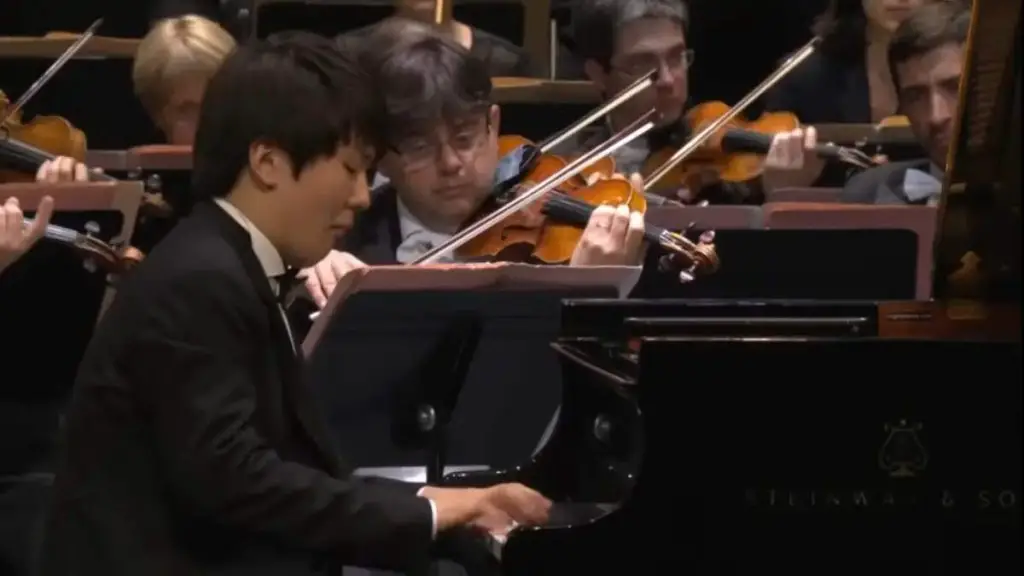
Educated at Yewon School and Seoul Arts High School, Cho moved to France in 2012 to study under Michel Béroff at the Conservatoire de Paris. His career includes winning the International Fryderyk Chopin Competition for Young Pianists (2008), the Hamamatsu International Piano Competition (2009), and awards at the Tchaikovsky Competition and Arthur Rubinstein Competition.
He rose to fame within South Korea and the international classical music world in 2015 after winning the XVII International Chopin Piano Competition, becoming the first pianist from his country to do so.
Cho has performed with major orchestras globally, including the Berliner Philharmoniker and Los Angeles Philharmonic, and worked with renowned conductors. An active recitalist, he has appeared in prestigious venues like Carnegie Hall and the Berliner Philharmonie and participated in top music festivals like the Verbier Festival and Salzburg Festival.
Sources
- Piano Concerto No. 1 (Tchaikovsky) on Wikipedia
- Piano Concerto No.1, Op.23 (Tchaikovsky, Pyotr) on the International Music Score Library Project website
- Seong-Jin Cho on Wikipedia
